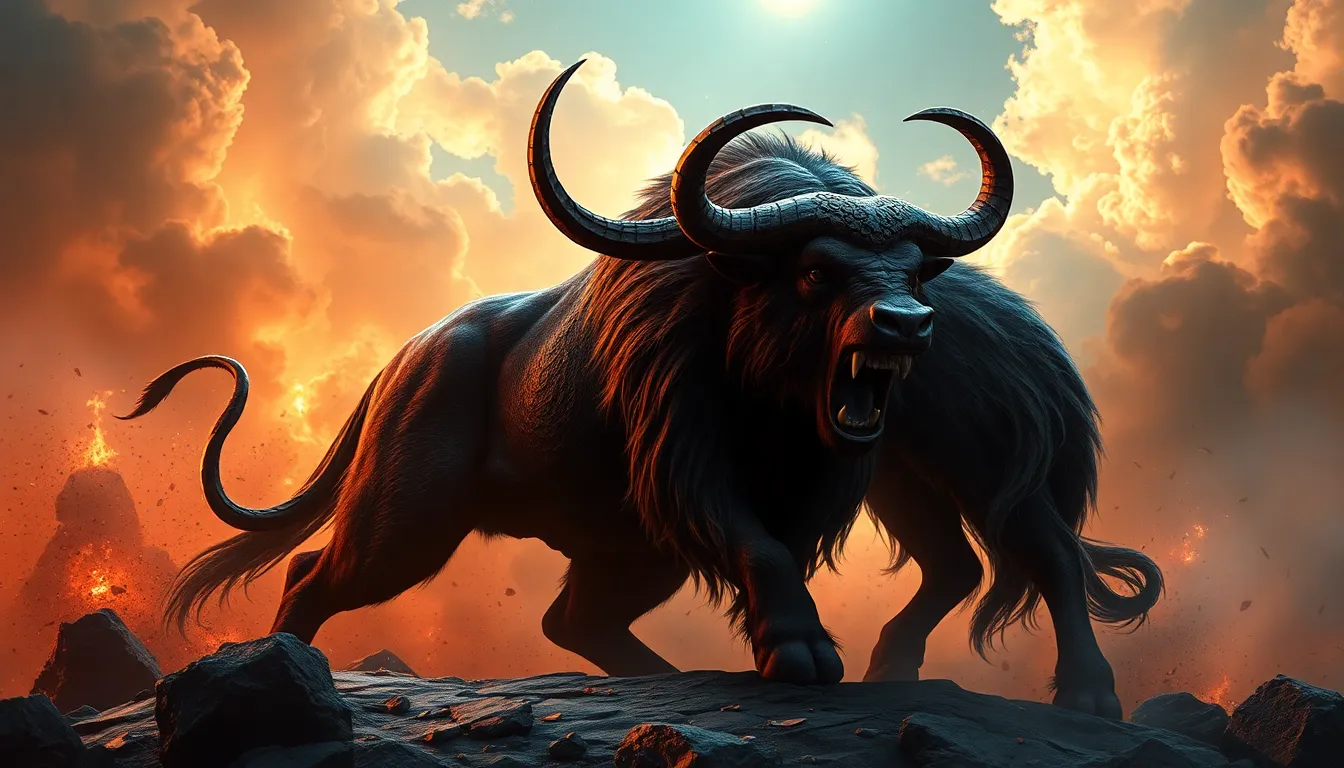The Minotaur: A Study of the Nature of Evil in Myths
I. Introduction
The myth of the Minotaur is one of the most fascinating and enduring stories in Greek mythology. This tale, which involves a half-man, half-bull creature, is not just a story of heroism and adventure; it also delves deep into the themes of evil, monstrosity, and the human condition. Understanding the Minotaur myth can provide insights into the nature of evil, which is a recurring theme in many mythological narratives. This article aims to explore the complexities of the Minotaur myth, examining its characters, symbolism, and the broader implications of its themes.
II. Background of the Minotaur Myth
The origins of the Minotaur myth can be traced back to ancient Crete, where King Minos ruled. The Minotaur itself was born from a cursed union between Pasiphaë, Minos’s wife, and a magnificent bull. This unnatural birth set the stage for the tragic events that followed. Key characters in this myth include:
- King Minos: The ruler of Crete who sought to hide his shameful creation.
- Pasiphaë: The queen who bore the Minotaur and represents the consequences of divine punishment.
- Theseus: The heroic figure who ultimately confronts the Minotaur, symbolizing the struggle against evil.
The labyrinth, designed by Daedalus to contain the Minotaur, serves as a potent symbol of confusion and entrapment, reflecting the complexities of moral choices and the darkness within humanity.
III. The Minotaur as a Symbol of Evil
The Minotaur embodies physical monstrosity and the concept of evil manifested in a tangible form. Its appearance—a creature with the body of a man and the head of a bull—represents the duality of nature, merging both human and beastly traits. This duality raises questions about the nature of evil itself:
- Physical Representation: The Minotaur’s grotesque form is a direct representation of evil and monstrosity, immediately evoking fear and revulsion.
- Man and Beast: The creature’s half-human nature suggests that evil resides within humanity, challenging the notion of pure monstrosity.
- Moral Landscape: The Minotaur’s existence complicates the moral framework of Greek mythology, where heroes often confront their own darkness.
IV. The Nature of Evil in the Minotaur’s Actions
While the Minotaur is often perceived as the archetype of evil, an analysis of its actions reveals a more nuanced understanding. The Minotaur can be seen as a victim of circumstance, cursed to live in isolation and fed with human sacrifices due to the decisions made by King Minos and Pasiphaë.
Furthermore, the Minotaur’s violent behavior is not inherently evil but stems from a lack of agency and choice, raising questions about the nature of inherited sin:
- Victim of Circumstance: The Minotaur’s existence is a result of human hubris and divine retribution, complicating its role as a villain.
- Analysis of Violence: The creature’s acts of violence can be seen as a response to its tragic existence rather than an expression of inherent evil.
- Inherited Sin: The implications of the Minotaur’s lineage reflect the idea that evil can be inherited, challenging the notion of individual culpability.
V. The Hero’s Journey: Theseus and the Fight Against Evil
Theseus, the Athenian hero, represents the archetypal hero’s journey, tasked with confronting the Minotaur. His quest is not merely a physical battle but also a moral struggle against the embodiment of evil:
- Archetypal Hero: Theseus symbolizes the ideal hero, demonstrating bravery and the willingness to face darkness.
- Confrontation: The quest to defeat the Minotaur symbolizes the struggle against personal and societal evils.
- Thematic Elements: Themes of courage, sacrifice, and moral ambiguity emerge as Theseus navigates the labyrinth, confronting not only the Minotaur but also the complexities of heroism.
VI. The Labyrinth: A Metaphor for Inner Darkness
The labyrinth itself serves as a powerful metaphor for the psychological and moral complexities of evil. It is not just a physical structure but represents a journey into the self:
- Psychological Construct: The labyrinth illustrates the confusion and complexity of the human psyche, where evil often lurks in the shadows.
- Confronting Evil: The journey into the labyrinth symbolizes the internal struggle of facing one’s fears and moral dilemmas.
- Connection to Fears: The labyrinth reflects societal evils and personal fears, suggesting that confronting the Minotaur is akin to confronting our inner demons.
VII. The Legacy of the Minotaur in Modern Culture
The Minotaur’s influence extends far beyond ancient Greece, permeating literature, art, and popular culture. Its legacy continues to provoke thought and discussion about the nature of evil:
- Influence on Literature: The Minotaur has inspired countless works of fiction, poetry, and drama, symbolizing the eternal struggle between good and evil.
- Contemporary Interpretations: Modern adaptations often explore themes of identity, monstrosity, and the nature of evil in nuanced ways.
- Ongoing Relevance: The Minotaur remains a significant figure in discussions of morality, challenging us to reflect on the complexities of human nature.
VIII. Conclusion
In conclusion, the Minotaur myth serves as a rich tapestry for exploring the nature of evil. Through the examination of its characters, symbolism, and themes, we gain valuable insights into the moral complexities that define human existence. The Minotaur, as both a symbol of monstrosity and a victim of circumstance, invites us to reflect on our understanding of good and evil. As we continue to explore these mythological narratives, we unravel the intricate layers of morality that shape our perspectives and challenge our perceptions of humanity.
This article encourages further exploration of the complexities of mythological figures in modern discourse, pushing us to consider how these ancient tales resonate with contemporary issues of morality and the human condition.




